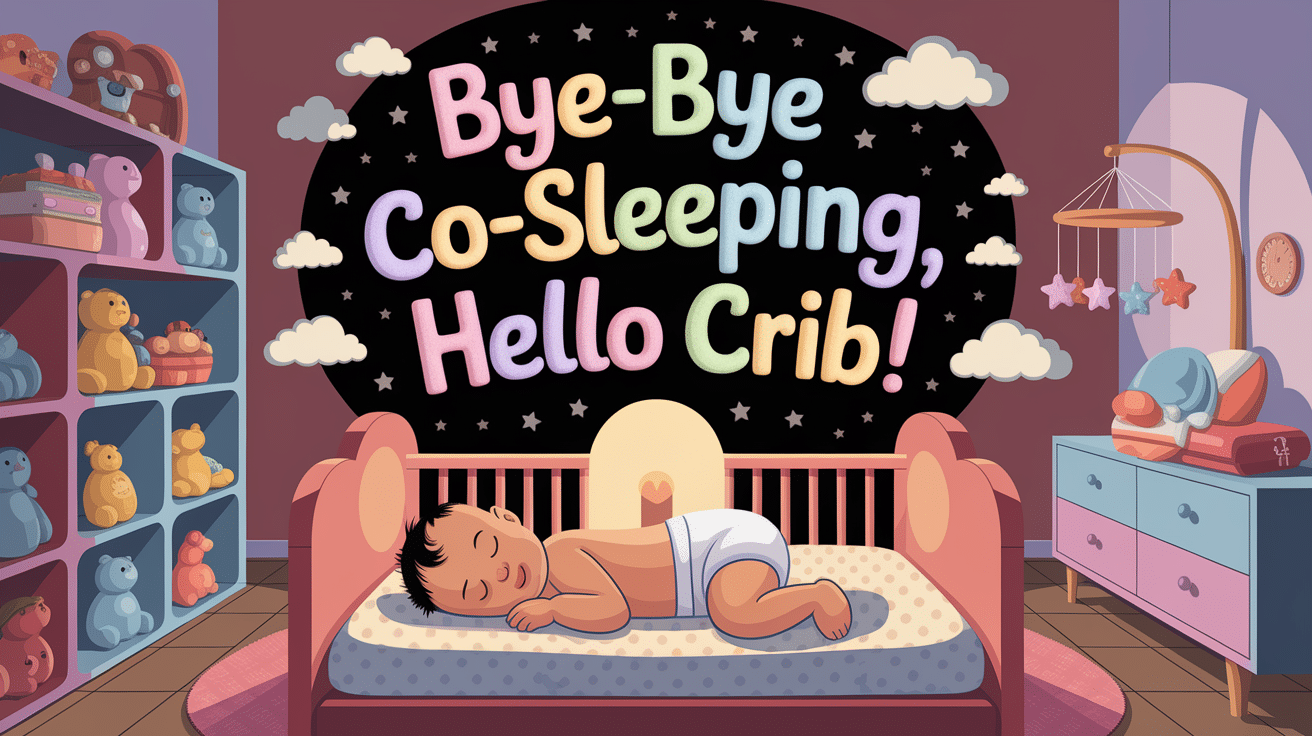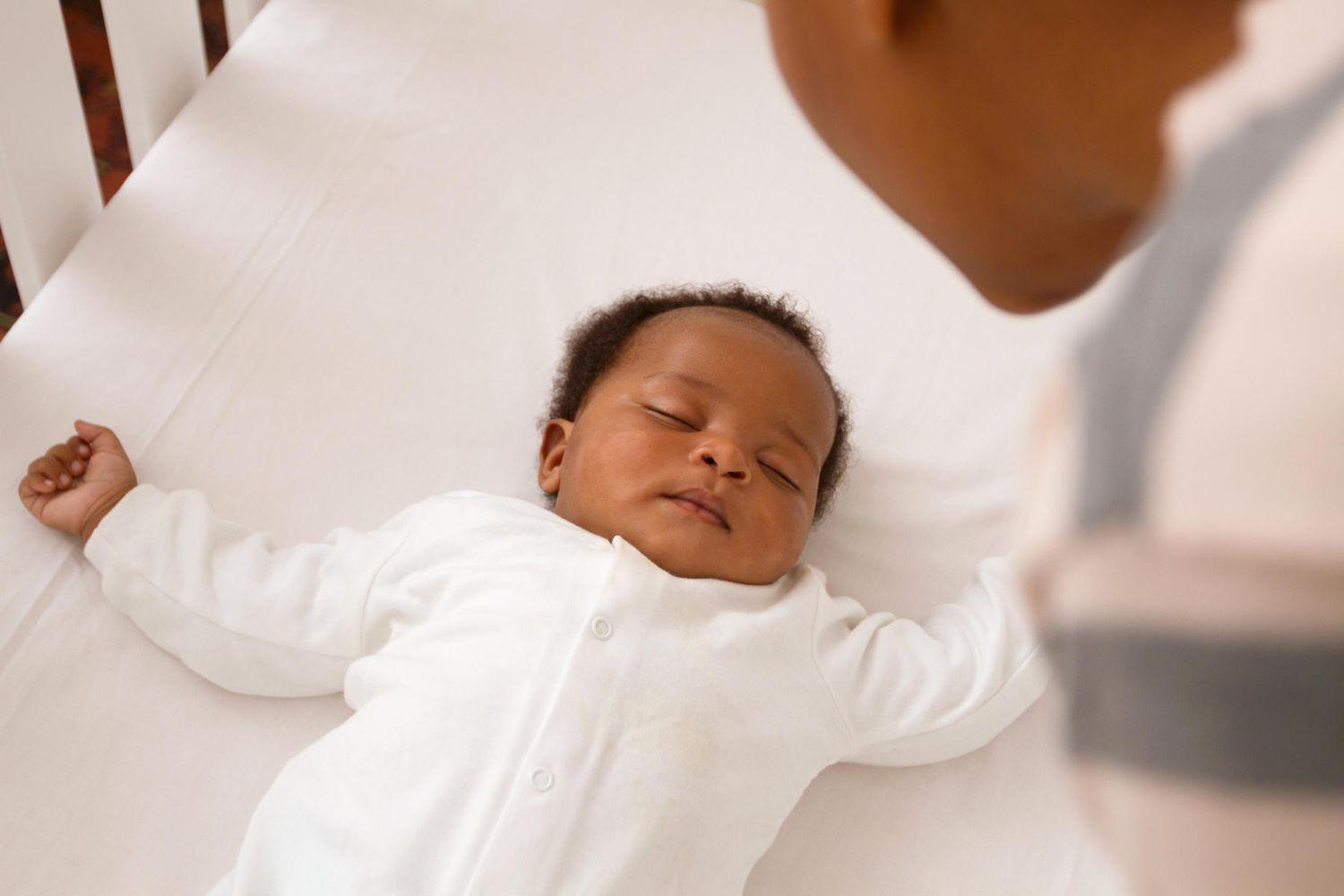
Night after night, the same sweet dilemma: your baby sleeps peacefully against you, but that crib sits empty, waiting.
Transitioning from co-sleeping to crib can feel like leaving the comfort of a cozy routine for uncharted territory.
Your baby has grown accustomed to your warmth, heartbeat, and reassuring presence throughout the night. Meanwhile, you’ve developed a sixth sense for their every movement and sound.
Did you know? Babies spend about 50% of their sleep in REM sleep compared to adults’ 20%, making them more likely to wake during transitions between sleep cycles.
The challenge isn’t just physical separation—it’s an emotional trip for both of you. With patience and the right approach, your little one can learn to embrace their crib while you both enjoy better sleep.
Why Transitioning from Co-Sleeping Is Important?
Transitioning from co-sleeping to crib sleeping represents an important developmental milestone. While bed-sharing fosters early bonding, independent sleeping offers significant advantages as your baby grows.
Safety becomes a priority once your little one becomes more mobile, as adult bedding poses potential hazards. The American Academy of Pediatrics recommends separate sleep surfaces to minimize SIDS risk.
Moving to a crib encourages crucial self-soothing skills that build emotional resilience and confidence beyond bedtime.
This transition typically improves sleep quality for everyone involved—parents enjoy uninterrupted rest without disturbances from their baby’s movements.
In contrast, infants often sleep more soundly in their dedicated space with consistent routines. Though the process requires patience, the benefits of helping your baby learn to sleep independently in their crib make the effort worthwhile for long-term sleep health.
Signs Your Little One Is Ready for Crib Sleeping

Most babies transition to a crib between 3 and 6 months of age, though this varies based on individual development.
Look for signs of readiness such as increased movement, outgrowing their bassinet, or improved head and neck control.
Developmental milestones matter more than age alone. Before making the switch, your baby should be able to roll over independently and have good head control. Watch for decreased startle reflexes and improved self-soothing abilities.
Creating a safe sleep environment with a firm mattress, fitted sheet, and no loose bedding ensures a smooth transition.
Establish a consistent bedtime routine to help your baby adjust to their new sleeping space.
Breaking Co-Sleep Habits: Helping Baby Embrace the Crib

Moving your baby from the comfort of your bed to their crib can feel daunting, but with patience and consistency, it can be a smooth trip.
These proven steps will help both you and your little one guide this important sleep transition with minimal tears and maximum rest.
Step 1: Start with Daytime Naps
Begin your transition by placing your baby in the crib for daytime naps when they’re typically more adaptable to change. This gentle introduction helps them become familiar with the new sleep space without the pressure of nighttime sleep.
Step 2: Create a Familiar Environment
Place items from your co-sleeping arrangement into the crib to provide comfort and familiarity. A sleep sack with your scent or a blanket (safely positioned) that you’ve used together can make the crib feel less foreign.
Step 3: Choose Your Transition Method
Decide between a gradual approach (sitting beside the crib initially, then slowly moving farther away over several nights) or the cold turkey method (complete switch to crib sleeping). Consider your baby’s temperament when making this choice.
Step 4: Establish a Consistent Bedtime Routine
Implement a calming sequence of activities before crib sleep—perhaps a warm bath, gentle story, soft lullaby, and feeding. This predictable routine signals to your baby that sleep time is approaching.
Step 5: Provide Reassurance When Needed
When your baby fusses in the crib, offer gentle reassurance through touch and soothing words without immediately removing them. Brief comfort visits help them learn to self-soothe while knowing you’re nearby.
Be Patient with the Process

Patience is vital when navigating any meaningful change or growth. Initially, resistance is natural—our minds and bodies often push back against new routines or challenges.
This resistance isn’t a failure but rather a normal part of conversion.
Look for subtle progress indicators rather than dramatic breakthroughs. Small shifts in perspective or tiny improvements can signal that you’re moving in the right direction, even when the final destination seems distant.
Maintaining emotional equilibrium proves crucial throughout the journey. By approaching challenges with steady calmness and persistent effort, you create the stable foundation necessary for lasting change.
Remember that consistency trumps intensity—regular small actions ultimately yield greater results than sporadic heroic efforts.
The most worthwhile achievements rarely happen overnight, but patience changes difficult processes into valuable growth opportunities.
Common Mistakes to Avoid When Sleep Training
Going back to co-sleeping too quickly can undermine your progress. Parents often give in during middle-of-the-night wakings, especially after several exhausting nights.
Remember that consistency is key to successful sleep training.
Inconsistent routines confuse babies and make it harder for them to settle. When bedtime procedures vary night to night, children struggle to develop healthy sleep associations. Establish a predictable sequence of activities like bath, book, and bed.
Overstimulating your baby before bedtime can make it difficult for them to wind down. Bright lights, screens, and energetic play right before sleep time keep their brains active.
In the hour before bed, create a calm environment with dimmed lights and quiet activities.
Most common mistake: Expecting overnight success rather than gradual progress through consistent effort.
Helpful Tips from Other Parents
Establishing a consistent bedtime routine creates security for children and helps them understand when it’s time to wind down.
A predictable sequence of bath, story, and cuddles signals to their developing brains that sleep is approaching. Transitional objects provide comfort during sleep separation.
A special blanket or soft toy can bridge the gap between wakefulness and dreams, easing your child’s anxiety.
Environmental factors significantly impact sleep quality. Dim lighting triggers melatonin production, while white noise masks household sounds that might disturb sensitive sleepers.
Temperature matters, too—a slightly cool room promotes deeper rest than one that’s too warm.
Special tip: Create a “worry jar” where children can symbolically place their concerns before bed, freeing their minds for peaceful slumber.
What If the Baby Cries or Refuses the Crib?

Understanding your baby’s cries is essential for effective sleep training. When your baby resists bedtime, it’s important to distinguish between normal fussiness and genuine distress.
Normal fussiness typically involves mild protests that gradually diminish within 10-15 minutes.
Your baby may whimper, squirm, or briefly cry but will eventually settle.
Gentle sleep training methods, such as the “chair method” or “pick-up-put-down” technique, can help your baby adjust to the crib without excessive crying. These approaches balance independence with reassurance.
True distress, however, manifests as escalating, panicked crying that intensifies rather than subsides.
You can provide comfort without picking up by gently patting your baby’s back, using rhythmic shushing sounds, or offering verbal reassurance in a calm, soothing voice. Sometimes, just your presence is enough to help them settle.
Final Notes
Every baby’s sleep is unique. What works for one may not work for another, so be prepared to adapt your approach based on your little one’s temperament and needs.
Consistency is key when moving your baby from your bed to their crib. Create a predictable bedtime routine and stick with it, even when progress seems slow.
Remember that patience is your greatest ally during this transition.
The path from co-sleeping to independent crib sleeping isn’t always straightforward, but with gentle persistence and lots of reassurance, your baby will gradually adjust to their new sleep space.
Trust the process and celebrate small victories along the way—soon enough, both you and your baby will be enjoying better sleep.
If you’re interested in more informational content on mothers and babies, feel free to click here and explore other blogs that you might enjoy.
